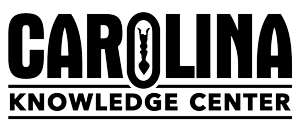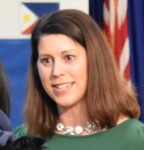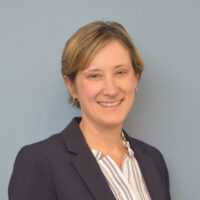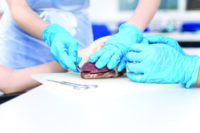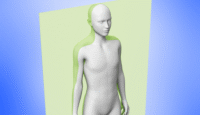Lesson study is a teacher professional development tool. It is known by other names including collaborative lesson research, research study, and learning study. Lesson study is essentially a teaching improvement activity in which instructors jointly develop, teach, observe, analyze, and revise a lesson to more effectively promote student learning.
Lesson study focuses on the teaching process–not the teacher–as well as the students’ learning process for a particular lesson. It is a success for teachers and students when the teacher learns how to best match their lesson delivery approach with student learning as made visible during the lesson.
Want to know more about the history and process of lesson study?
Learn how Onondaga-Cortland-Madison Cooperative Educational Services (OCM BOCES) uses lesson study as part of its teacher professional development program in 23 school districts.
There is a growing interest and participation in lesson study in the United States and around the world. The World Association of Lesson Studies, for instance, began in 2007 and now has members from a majority of countries. US lesson study practitioners and researchers contribute annually to its programming. Many lesson study organizations hold conferences and webinars to discuss, promote, and teach lesson study locally and internationally.
These resources from The Lesson Study Group at Mills College provide more information about lesson study programs, events, and research.
US lesson study programs
International lesson study programs
Lesson study events (Also check individual webinars and other events.)
Lesson study research
While current lesson study programs often focus on mathematics, there is also a growing number of science lesson study efforts. Two US educators who are leaders in the advancement of science lesson study are Dr. Sharon Dotger, associate professor at the Syracuse University School of Education in Syracuse, New York, and Jessica Whisher-Hehl, assistant superintendent for instruction at Solvay Union Free School District in Syracuse, New York.
Dotger has conducted research and held science lesson study events since 2008. Whisher-Hehl previously was the coordinator of innovative teaching and learning at the OCM BOCES Center for Innovative Science Education in New York State. Whisher-Hehl and Dotger have provided lesson study events in several school districts and continue to teach and promote lesson study. Both of these educators recognize the importance of linking science content with effective classroom instructional practices.
“Lesson study yields teacher learning through its focus on student learning during research lessons,” Dotger explains. “Teachers benefit from deepening their collaborative efforts to improve their teaching, learning more about content, and experimenting with the details of instructional strategies. Along the way, they build increased self-efficacy. In turn, their students benefit from improved lesson designs.”
Carolina Biological sat down with these outstanding educators to discuss the current state of science lesson study programs, what is needed at the school and district levels, and how lesson study is helping to meet those needs.
Lesson study insights: Dr. Sharon Dotger
“A lot of lesson study work centers on teaching mathematics. The reason for this is that, in the 1950s, Japan began teaching mathematics based on a framework called Teaching Mathematics through Problem Solving. Since that time they have fine-tuned their approach and coupled it with lesson study, and their success has been phenomenal. We realize that there is a lot about the kind of science we’re trying to teach that has conceptual parallels to Japan’s approach to teaching mathematics through problem solving. Similar success is being achieved by embracing lesson study for science teaching.”
Science Teaching Needs and Their Drivers
New York school districts and teachers face several challenges to providing excellent science instruction to their students. Three paramount needs are:
- Excellent curricula
- High-quality lesson and lab materials
- Impactful teacher training
The ultimate driver of these needs is ensuring students receive instruction that meets science standards and contributes to students meeting literacy standards.
The Next Generation Science Standards* (NGSS) or similar state standards have been adopted by most US states. The New York State P—12 Science Learning Standards were adopted in 2016, and implementation began in the 2017—2018 school year. The success of the standards adoption will first be evaluated in 2025 through standardized student testing.
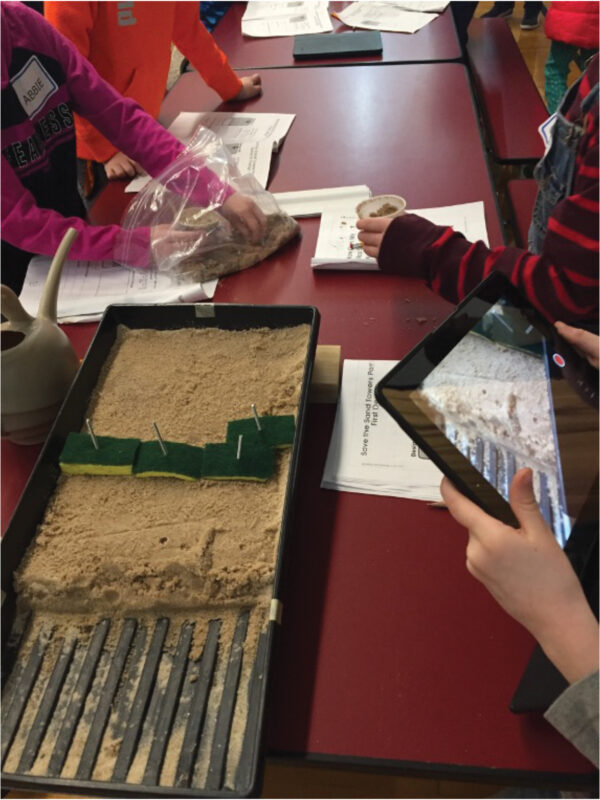 Curricula and materials: The new science standards are phenomena based and incorporate three-dimensional learning. The phenomena-driven approach of lesson study parallels that of the standards, leading to mutual reinforcement between the two.
Curricula and materials: The new science standards are phenomena based and incorporate three-dimensional learning. The phenomena-driven approach of lesson study parallels that of the standards, leading to mutual reinforcement between the two.
Any selected curricula must have hands-on activities that help students develop their problem-solving skills through their observations of real-life phenomena. The curricula also must include the three dimensions of the science education Framework:
- Scientific and engineering practices
- Disciplinary core ideas
- Crosscutting concepts
Dotger and Whisher-Hehl kept these criteria in mind when evaluating different curricula. They both found the Smithsonian Science for the Classroom® program to be fully standards-aligned and invaluable in helping teachers and students be successful with the new science standards. “The Smithsonian curricula help prepare students to be systems-thinking, problem-solving citizens of the world,” Whisher-Hehl attests.
The materials included in the Smithsonian curricula also support students in their phenomena-based learning, nudging students through thought processes so they can make sense of what they are observing and learning.
Dotger firmly believes that the materials component is especially critical in the science realm. “Part of the reason we commit to using the Smithsonian materials is that we know they have science resources that teachers and districts just don’t have,” she explains.
Literacy/ELA standards: Literacy standards encompass student reading, writing, and discussion. A good science curriculum includes activities that support these vital literacy components. As Dotger explains, “We have to stop trying to force literacy into science and realize that when science is done well, the literacy is already there.”
As discussed in the Carolina white paper Nurturing Young Thinkers, a student’s science lessons can improve their literacy by:
- Encouraging their natural curiosity and discussing their observations
- Working in collaborative teams where student-to-student discussion occurs
- Using notebooks to record their observations, investigative plans, lab results, diagrams, answers to questions, conclusions, and more
Each Smithsonian Science for the Classroom unit includes Smithsonian Science Stories Literacy Series™ readers that integrate science content, engineering, and literacy. The coherent science storylines begin with the end in mind, help students work toward answering a question or solving a problem, and spark students’ curiosity with Lesson Questions and Focus Questions.
Teacher training: Dotger began her lesson study research and practice in 2008. Since then, the number of conferences and public lesson study events that she and her team host or support has continued to grow. Concurrently, the number of lesson study events and conferences worldwide also continues to increase.
Whisher-Hehl explains the value of lesson study events for teacher professional development: “The new standards require observation and sensemaking from students. Teachers can help them do that by asking the right questions and making sure the students notice the right things so they can make sense of the lesson. The teachers see students do just that during lesson study, and that’s what really helps teachers. They get to hear and see the trajectory of student learning that is happening.”
Dotger adds, “It is a huge thing for people from the Smithsonian to show up to our lesson study events, because it’s an opportunity for them to see how the materials they create and provide are working for teachers and students. It provides an opportunity for the design process to be continued.”
Student Experiences and Outcomes
A growing number of students are experiencing lesson study thanks to events sponsored by a growing list of lesson study organizations. Dotger and Whisher-Hehl most recently held a May 2021 live, online lesson study event with 120 people from 18 US states and 12 countries attending. Teachers, administrators, and parents observed three elementary teachers present a Smithsonian science lesson to first graders.
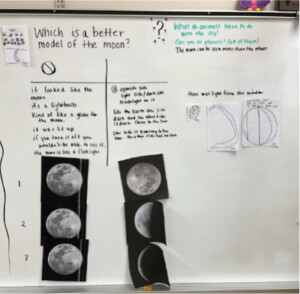
In the Q and A session after the lesson study, parents commented about first graders’ science talk and the demonstrated “unbelievable” vocabulary and thinking. This speaks to the potential for students of all ages to embrace and understand science, learn through challenging yet productive problem-solving, and enhance their literacy through the discourse that is part of well-designed science lessons.
Dotger describes the lesson from the student perspective: “The Smithsonian unit that was taught had students evaluate two competing models for how the moon is illuminated and asked the first graders to compare the models to each other, and compare them with their own observations in the natural world. It was a very high bar, and our research lesson demonstrated that kids even as young as six are capable of reasoning through something that complex. Lesson study allows us the opportunity to let other observers see that too.”
Teachers are amazed to see how the results of lesson study can change student thinking. They see their students taking chances without worrying about getting “the right answer.” Their students now realize that no matter their answer, it will be considered and talked through to keep the learning going.
Lesson study insights: Jessica Whisher-Hehl
“My teachers are talking positively to me about the Smithsonian science units. In fact, the Smithsonian units are a contributing factor in why the elementary teachers came to me and said, ‘We also need a new math curriculum, because we’re seeing the engagement of the students and the cognitive work they are doing in science, and we think that needs to happen elsewhere.’”
Teacher Training and Outcomes
- It was fantastic! We learned that we can do this, even with teachers from multiple schools and that teach different grade levels.
- It’s the most meaningful professional development that I’ve done.
- The way that I now teach science and math is because of lesson study, and it has lifted these kids up educationally and in their thought processes; they now think positively about math and about science.
- I’ve done a lot of staff development, after school courses, and things like that, but I don’t feel that anything has affected or improved my teaching as much as lesson study has.
- This helps me consider how to best facilitate student discussions by really thinking about how I am presenting the material, developing parts of my classroom, making the curriculum accessible to students, and utilizing these pieces to build more discussion and allow every student to share their knowledge, and then to share it back to them so they know they are heard.
- I take so much more into consideration when I’m planning a lesson than I did before lesson study. It has changed the way I think about things, like what I put on the board, the possible answers that the kids could give me and how I’m going to answer them, how much blank space the kids need in their lesson notebook or pages, and the wording I use.
- With lesson study, when you’re working with other people who are also excited about it, the conversation is so rich and the collaboration is so good in helping you think through things.
Lessons Learned
There is nothing like teaching a test lesson to be reminded of the key aspects of effective science teaching and learning. There have been many lessons learned by Dotger, Whisher-Hehl, and the educators participating in lesson study events.
The overarching takeaway is the interdependency of the theory of action, professional development, and high-quality curricula and materials for increased student achievement. “Professional development is critical,” Whisher-Hehl says, “but I can’t do lesson study without high-quality instructional materials.” At the same time she knows that “high-quality instructional materials are essential, but alone they are insufficient.”
This interdependency is best demonstrated by the success of the Smithsonian’s five-part LASER Model that underlies all of their work. The model is based on the following elements:
- Research-based, inquiry-driven curricula
- Professional development
- Materials support
- Administrative and community support
- Appropriate assessment
A five-year study demonstrated the LASER Model’s efficacy in transforming education through science.
Dotger explains another important lesson that participants learn: “Lesson study is antithetical to the way we usually think about instructional observation. We commonly think that instructional observation is about evaluating teachers. That’s not what we’re doing in lesson study. We are actually observing to try to remember what school was like for us when we were six years old. Can we return to our peanut butter, itchy, crayon-laden, shoes-untied, pigtails-are-crooked, six-year-old selves and look at this learning opportunity with that set of eyes again? How is this lesson feeling for those students? How are they experiencing it? That’s the lens through which research lessons should be observed. How do the lesson materials support that learning?”
It is important that teachers and administrators understand this crucial distinction as early as possible in their lesson study planning.
Challenges
Several challenges remain in the effort to make lesson study the norm for schools worldwide.
Making system-level adjustments to teacher professional development: School districts and states need to invest differently in how teachers are learning and being given the opportunity to learn.
The traditional approach to teacher professional development is attending a presentation in which a knowledgeable person talks about a topic or approach. This must be changed to have more active teacher involvement and hands-on learning. Lesson study truly engages teachers as learners in a process in which they observe real students during a live lesson. It’s a shift in how professional development is perceived and conducted. System-wide commitments are needed that value and provide the time and effort to integrate lesson study into their teacher professional development program.
Implementing school-wide lesson study: There is an increasing realization that for lesson study to live up to its potential, it must be adopted school-wide and taught continuously. This need is based on increasing evidence that doing lesson study one team at a time is doomed to fail, because lone teams cannot sustain the work sufficiently. Dotger explains, “The time and work of a single six-person team who really put their heads together to make it happen is roughly less than 20 percent of the total effort needed to provide lesson study to an entire school or district.”
One possible solution to this challenge is putting science coordinators or specialists in charge of a lesson study program. They could begin by attending training themselves and then develop a program for their school or district.
Getting teachers to attend lesson study events: A long-standing conundrum in teacher professional development is whether to make it mandatory or voluntary. Experience has shown that demanding teachers to participate in lesson study will doom it to failure. On the other hand, if teachers are asked to do it voluntarily, after a certain period of time, the volunteering will dwindle because they will be asked to do something else.
This problem ties into the need for districts to change their approach to teacher professional development and commit the time and effort needed to make it successful in the long term. Dotger explains that between 30 and 60 hours of committed time to a shared goal is generally what’s necessary to see someone change in a way that is noticeable, or even measurable.
Integrating remote and in-person lesson study training: During the height of the pandemic, Dotger and Whisher-Hehl, as well as other lesson study organizations, have held their lesson study events virtually. This trend is likely to continue post-pandemic.
There are benefits and challenges associated with virtual lesson study training.
Benefits: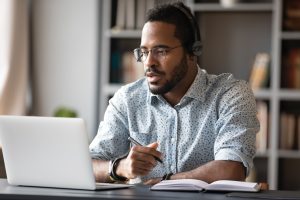
- The ability to continue teacher training during events that limit the ability to meet in-person
- The ability to record the research lesson and make it available for participants to review later
- Increased ease and lower cost of attending research lessons that would otherwise require travel
- Increased attendance by people from different countries and cultures and the wealth of insight such diversity often brings
Challenges:
- The technology needed to provide a high-quality digital experience
- Deciphering how best to accommodate attendees in different time zones
- Providing ways for participants to interact with each other
The chat feature of virtual meeting platforms provides a great means of unifying the participants and promoting meaningful connections that often continue beyond the training event. It is not unusual for such real-time discussions to reveal solutions to universal challenges the participants are facing.
In-person events also have benefits and challenges.
Benefits:
- Ease of interaction among attendees
- Only one time zone to consider
Challenges:
- Promoting open discussion within larger groups of diverse participants
- Finding an appropriate and affordable venue
Another option is a hybrid approach that includes both virtual and in-person elements. For example, an in-person lesson study can be conducted with a core group of planners and teachers from the school or district. Observers can watch the lesson study remotely and then carry on the discussion in their location and/or remotely.
It is important to conduct a cost-benefit analysis when choosing a lesson study event format. The decision should be strategic based on the district setting needs, and resources.
Conclusion
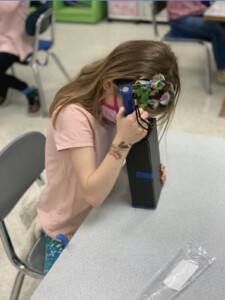 Lesson study is a powerful tool for helping teachers learn how to adjust their teaching processes to parallel their students’ learning processes. As Dotger and Whisher-Hehl have observed repeatedly, lesson study can transform a classroom into a powerhouse in which young minds learn to be observant, to make sense of their observations, to solve problems, and more.
Lesson study is a powerful tool for helping teachers learn how to adjust their teaching processes to parallel their students’ learning processes. As Dotger and Whisher-Hehl have observed repeatedly, lesson study can transform a classroom into a powerhouse in which young minds learn to be observant, to make sense of their observations, to solve problems, and more.
They have also identified a few key challenges that must be met to expand the use of lesson study to benefit even more students.
- A root challenge is for all involved to understand that lesson study is not a way for administrators to evaluate teachers. Lesson study is a way for teachers to observe how students respond to a lesson so they can optimize the way the lesson is taught for the benefit of students.
- It is also crucial that school administrations adopt lesson study on a school-wide or district-wide level, and commit the resources needed to provide ongoing lesson study as a key teacher professional development tool.
- Science curricula must be phenomena based, fully aligned with national and/or state science standards, and incorporate the three dimensions of science learning. The curricula must be accompanied by high-quality materials that support the goals of each lesson and promote student success in their activities.
Growing evidence shows that using lesson study to fine-tune science instruction is having a positive impact on teachers and students alike. Teachers who embrace lesson study are undoubtedly preparing the scientists and engineers of tomorrow!
References
- Carolina Biological Supply Company and Smithsonian Science Education Center. 2019. “How Teachers Learn through Lesson Study.” https://smithsonianstc.com/white-paper-how-teachers-learn-through-lesson-study/. 2021.“Nurturing Young Thinkers.” https://smithsonianstc.com/nurturing-young-thinkers-whitepaper/ .
- The Lesson Study Group at Mills College. 2018. https://lessonresearch.net.
- OCM BOCES Center for Innovative Science Education. 2021. https://www.ocmbocesiss.org/sc/home.html.
- Smithsonian Science Education Center. 2021. “The LASER Model.” https://ssec.si.edu/laser-model.
- Smithsonian Science for the Classroom. 2021. https://ssec.si.edu/smithsonian-science-for-the-classroom.
- University of Wisconsin at La Crosse. 2021. The Lesson Study Project. https://www.uwlax.edu/catl/inspiration/lesson-study.
- World Association of Lesson Studies. 2021. https://www.walsnet.org/blog/category/news.
*Next Generation Science Standards® is a registered trademark of WestEd. Neither WestEd nor the lead states and partners that developed the Next Generation Science Standards were involved in the production of this product, and do not endorse it.

